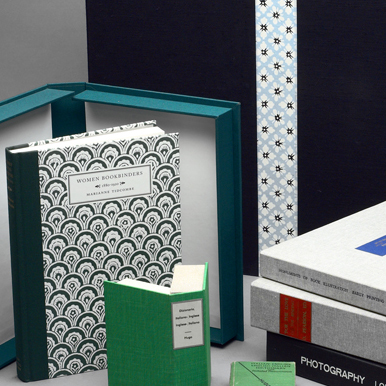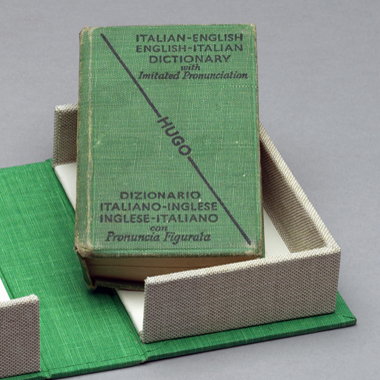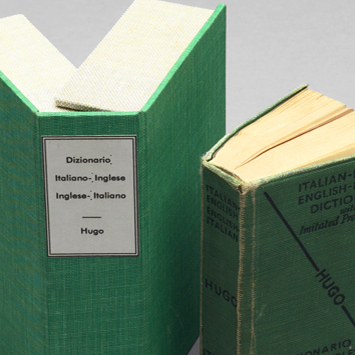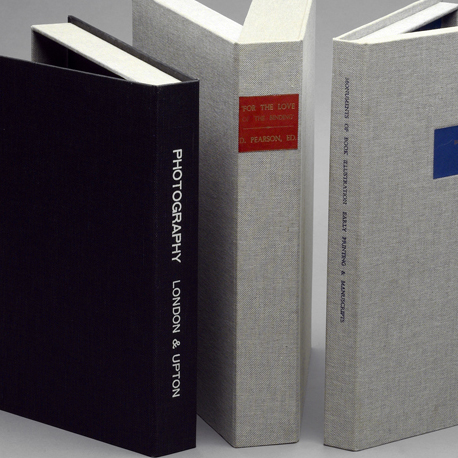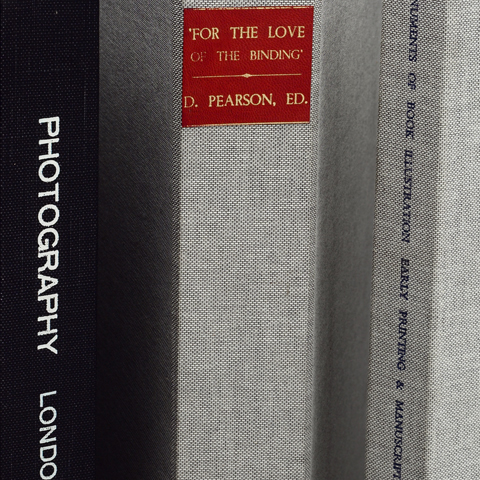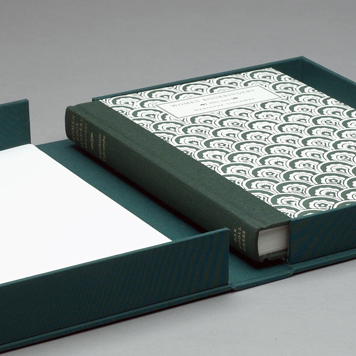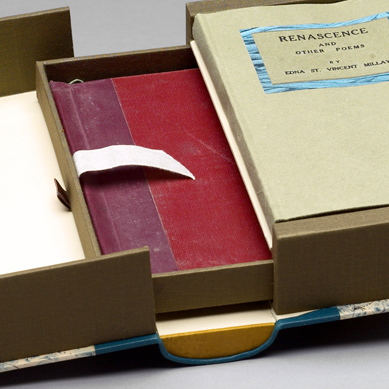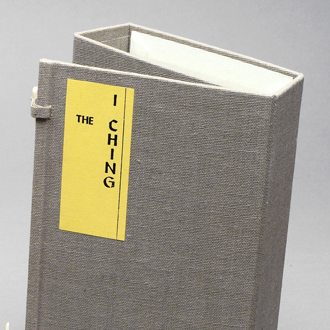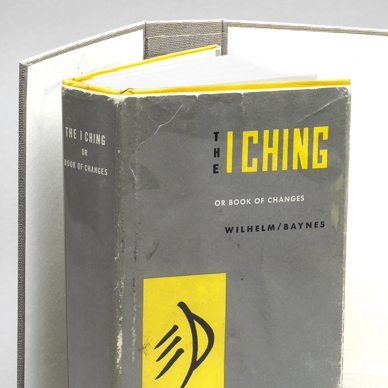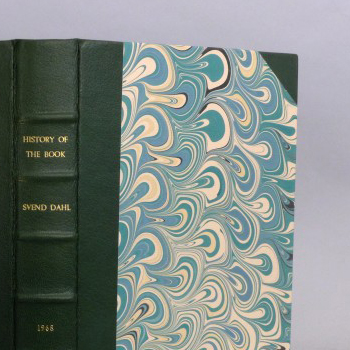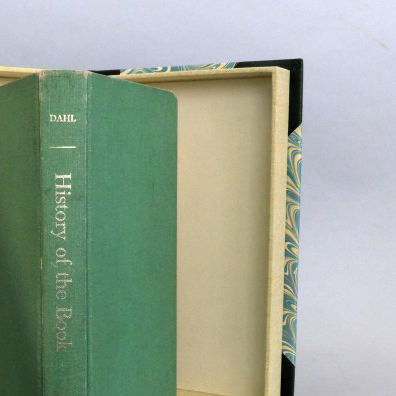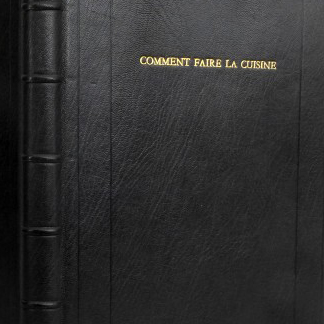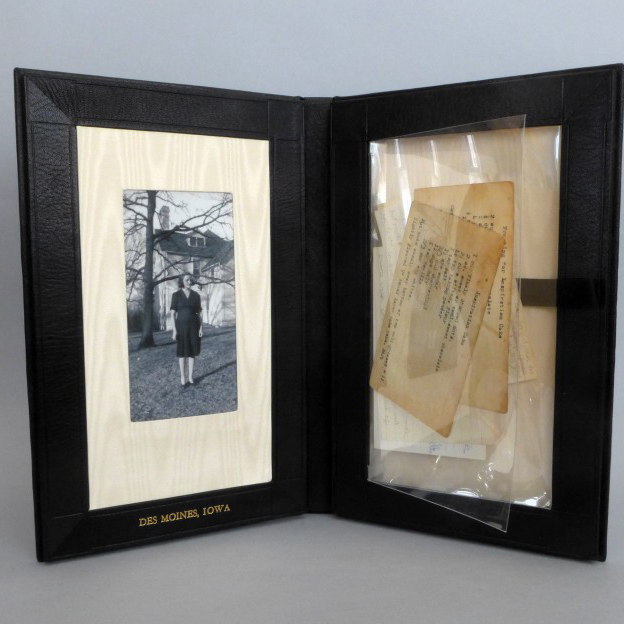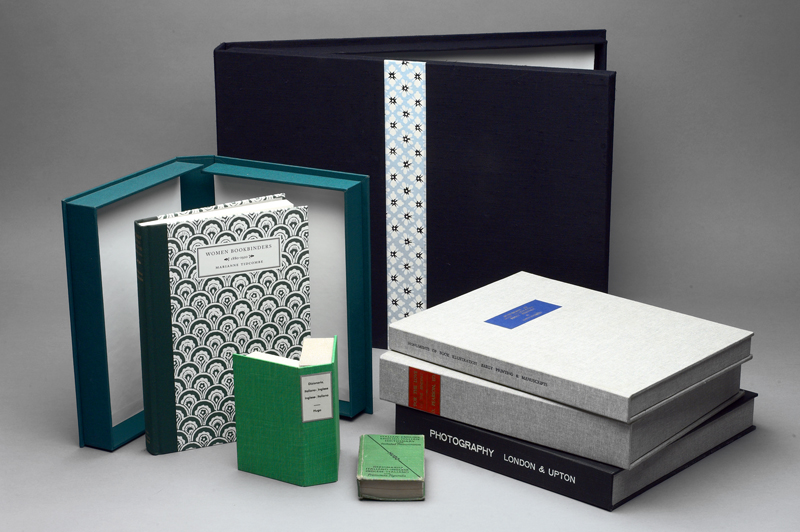
All the boxes pictured here are of the drop spine (also sometimes called clamshell, for there are two trays which nest inside each other like the sides of a clam's shell) variety. Drop spine boxes can be any size or color; they can have title labels in paper, bookcloth, or leather. They make excellent protective enclosures for books, documents, and/ or prints. Drop spine boxes are custom fitted to enclose the items destined to be housed inside them.
This tiny Italian-English Dictionary had some condition issues that, for various reasons, were not fit to be repaired. Instead, I made a box for it. If a book has structural problems that cannot be fixed due to budgetary or practical reasons, making a box to keep the contents together is often an appropriate solution.
This tiny Italian-English Dictionary had some condition issues that, for various reasons, were not fit to be repaired. Instead, I made a box for it. If a book has structural problems that cannot be fixed due to budgetary or practical reasons, making a box to keep the contents together is often an appropriate solution.
Title labels can be stamped directly on the spine of a box, as on the black box to the left, stamped on leather, as in the box in the center, and/ or on the front of the box, as the box on the right.
Title labels can be stamped directly on the spine of a box, as on the black box to the left, stamped on leather, as in the box in the center, and/ or on the front of the box, as the box on the right.
This photo shows how closely a box can and should be fitted to its contents.
This shows how a box with a drawer functions. I had repaired the book, but wanted to keep the original covers for sentimental reasons. Because I wanted to keep the original covers and the newly- rebound book together, I constructed a box with a drawer. This is a good strategy for any items that have separate components with different sizes that need to be housed together: books with sets of plates, for example.
This is a chitsu wrap. I made it as a way to keep the owner's coins, used in doing I Ching readings, and the book together. It also protects the book from normal wear and tear, although it does not fully enclose the book and should not be thought of as a conservation solution.
This is a chitsu wrap. I made it as a way to keep the owner's coins, used in doing I Ching readings, and the book together. It also protects the book from normal wear and tear, although it does not fully enclose the book and should not be thought of as a conservation solution.
This box has a false rounded shape to the spine to give the box a special touch. This box shows the title of the boox inside, its author, and the publication date. The marbled paper was done by Jake Benson, a fellow NBSS alum.
This box has a false rounded shape to the spine to give the box a special touch. This box shows the title of the boox inside, its author, and the publication date. The marbled paper was done by Jake Benson, a fellow NBSS alum.
The deluxe enclosure shown here is covered with Harmatan Fine goatskin along the interior panels and the outer cover as well. The interior panel on the right contains mylar envelopes with precious documents inside; the left panel contains a portrait of the documents' author.
The deluxe enclosure shown here is covered with Harmatan Fine goatskin along the interior panels and the outer cover as well. The interior panel on the right contains mylar envelopes with precious documents inside; the left panel contains a portrait of the documents' author.


